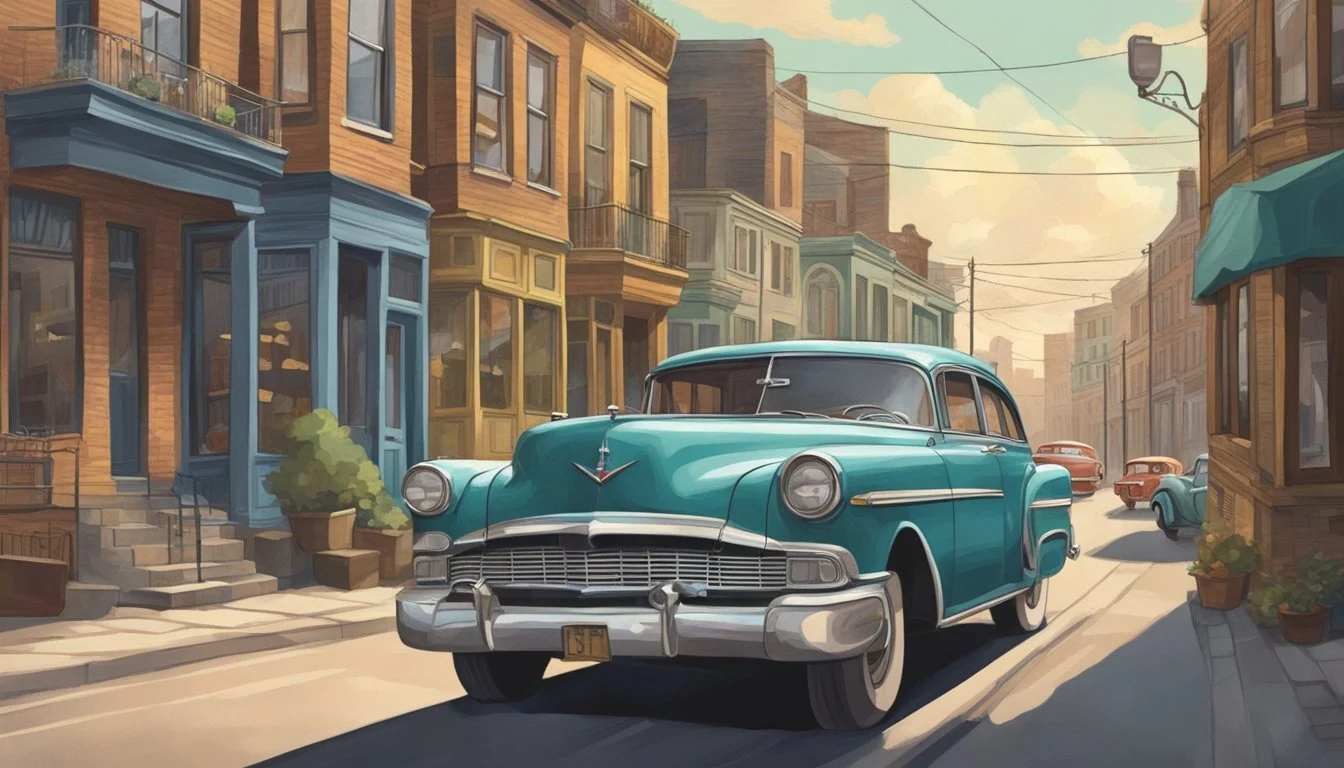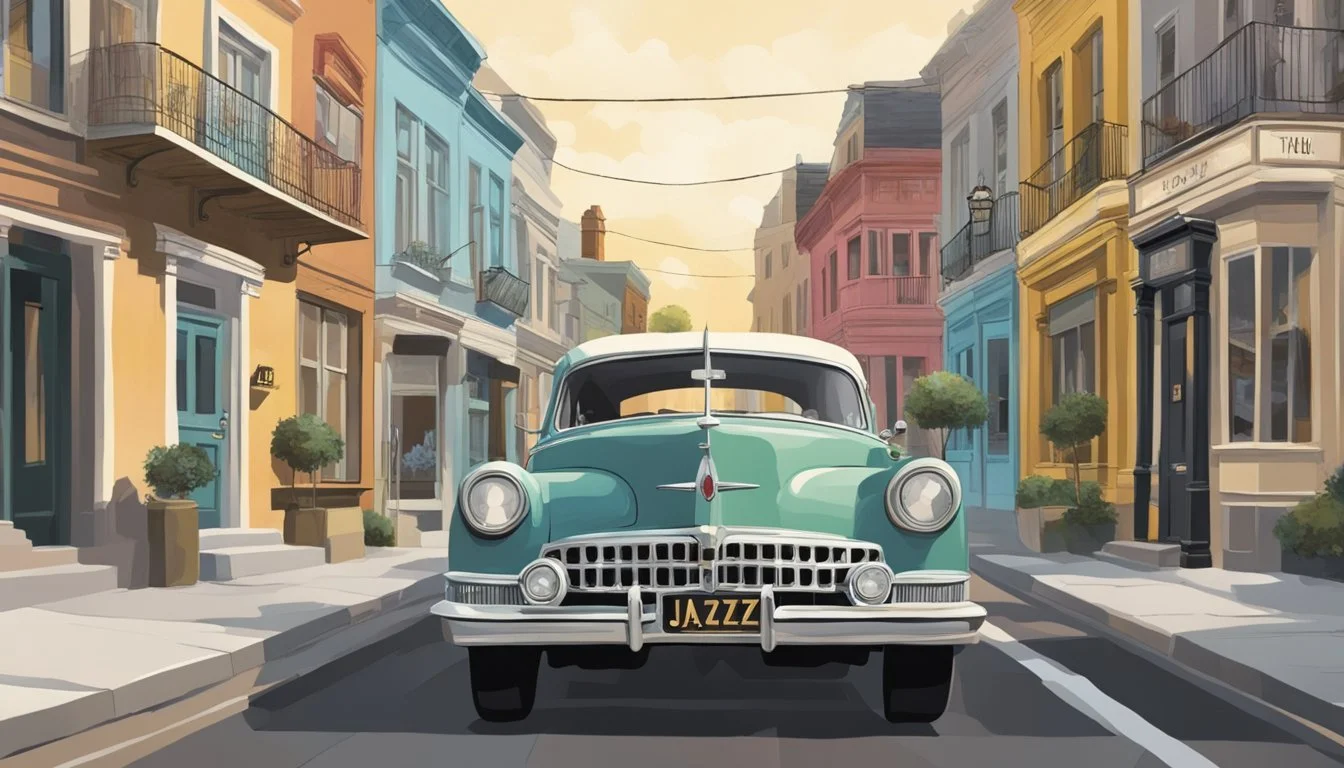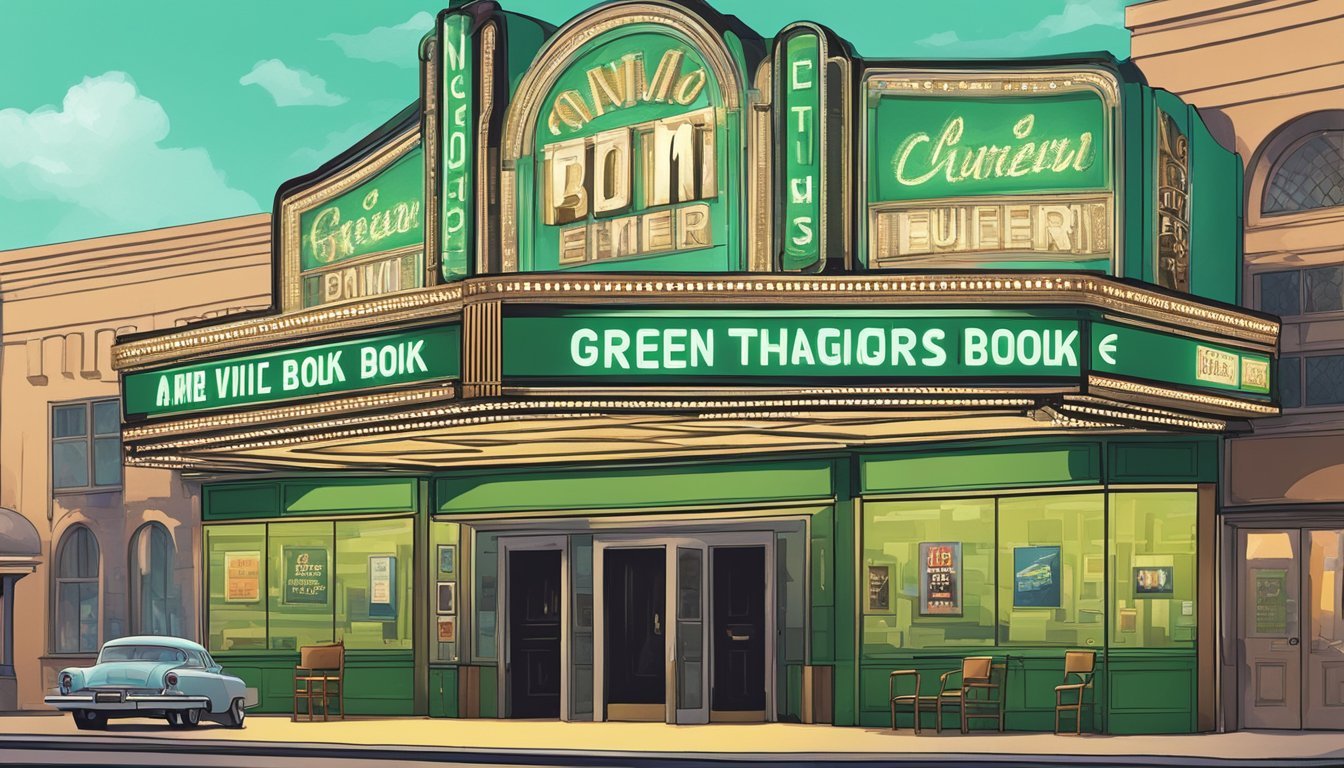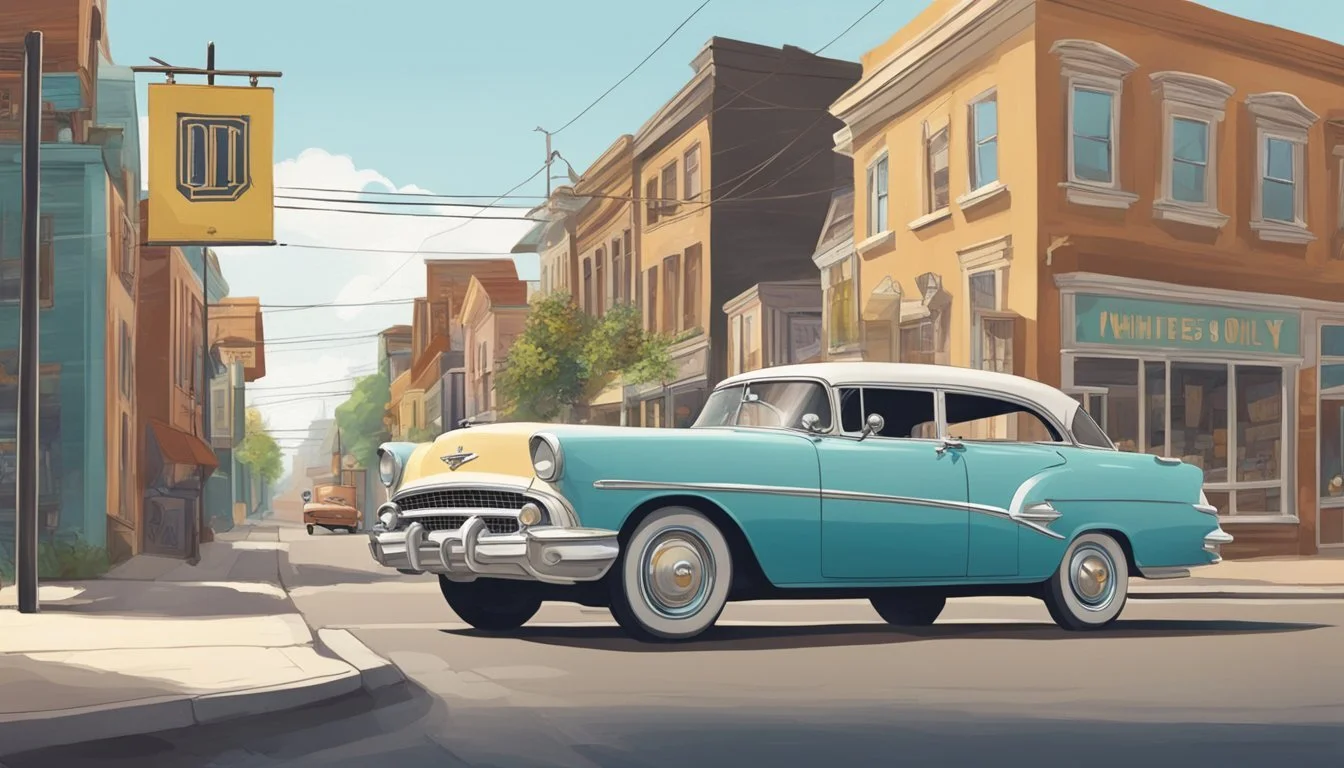Unmasking Racism: The Real Story Behind Green Book
Hollywood's Distorted View of Racial Progress
The 2018 film "Green Book" captivated audiences with its portrayal of an unlikely friendship between an African American pianist and his Italian American driver in 1960s America. While the movie received critical acclaim, it also sparked controversy over its depiction of race relations and historical accuracy.
The real story behind "Green Book" reveals a more complex narrative than the film presents, highlighting the pervasive racism of the era and the challenges faced by Black travelers. The movie's namesake, "The Negro Motorist Green Book," was a vital guide that helped African Americans navigate the dangers of segregation and discrimination while traveling across the United States.
Dr. Don Shirley, the talented pianist portrayed in the film, lived a remarkable life that extended far beyond his relationship with driver Tony Lip. Shirley's accomplishments as a musician and his experiences as a Black man in America offer a deeper understanding of the racial dynamics at play during this pivotal period in history.
The Genesis of 'Green Book'
The film 'Green Book' drew inspiration from a real historical document called "The Negro Motorist Green Book." This travel guide was first published in 1936 by Victor Hugo Green, a postal worker from Harlem.
Green created the guide to help African American travelers navigate the dangers of racial discrimination during the Jim Crow era. It listed safe accommodations, restaurants, and businesses that would serve Black customers.
The book became an essential resource for Black motorists, providing a measure of safety and dignity during a time of widespread segregation. It was published annually for nearly three decades, until 1966.
The movie 'Green Book' takes its name from this guide, using it as a backdrop for its story set in the 1960s. The film follows the journey of a Black classical pianist and his White driver through the Deep South.
While the guide itself plays a minor role in the movie, its existence underscores the harsh realities of racial inequality that persisted in America. The film's title serves as a poignant reminder of the struggles faced by Black travelers during this period.
Unveiling the Historical Context
"Green Book" takes place in the early 1960s, a pivotal time in American history marked by racial segregation and discrimination. The film's title refers to "The Negro Motorist Green Book," a travel guide published from 1936 to 1967.
This guide was essential for African American travelers, listing safe accommodations, restaurants, and businesses across the United States. It helped navigate the dangers and indignities faced by Black people during the Jim Crow era.
The Deep South, where much of the film is set, was particularly notorious for its strict racial segregation laws and frequent violence against African Americans. Many establishments refused service to Black patrons, and interracial interactions were often met with hostility.
Dr. Don Shirley's concert tour through this region was not just a musical journey, but a challenge to the status quo. As a classically trained Black pianist, his presence in traditionally white spaces was both groundbreaking and dangerous.
The relationship between Shirley and his driver, Tony Vallelonga, unfolds against this backdrop of racial tension and societal change. Their journey reflects the broader struggles and gradual shifts occurring in American society during this transformative period.
Analyzing 'Green Book' Through a Critical Lens
"Green Book" presents a complex portrayal of race relations in 1960s America. The film's depiction of friendship across racial lines, its historical accuracy, and its cinematic choices have sparked significant debate among critics and audiences alike.
Depiction of Race Relations
"Green Book" explores the unlikely friendship between Tony Lip, a white Italian-American bouncer, and Dr. Don Shirley, a Black classical pianist. The film showcases their evolving relationship as they navigate the segregated South. It highlights moments of racial tension and discrimination faced by Dr. Shirley.
The movie attempts to illustrate the harsh realities of Jim Crow laws and systemic racism. It depicts scenes of Dr. Shirley being denied service at restaurants and hotels designated for whites only. These moments aim to shed light on the everyday indignities faced by Black Americans during this period.
Critics argue that the film sometimes oversimplifies complex racial issues. Some feel it relies too heavily on the "white savior" trope, potentially diminishing Dr. Shirley's agency and experiences.
Accuracy of Representation
Questions have been raised about the historical accuracy of "Green Book" and its portrayal of Dr. Don Shirley. The film takes some liberties with the true story, leading to criticism from Shirley's family.
Key points of contention include:
The depth of friendship between Shirley and Lip
Shirley's relationship with his family
The extent of Shirley's familiarity with Black culture
The movie's depiction of the actual Green Book, a travel guide for Black motorists, has also been scrutinized. Some argue that the film doesn't fully explore the significance of this publication in Black American life during the Jim Crow era.
Despite these concerns, supporters of the film argue that it brings attention to a lesser-known historical figure and period in American history.
Cinematic Techniques and Narratives
"Green Book" employs various cinematic techniques to convey its story and themes:
Contrasting visuals: The film juxtaposes the opulence of Dr. Shirley's performances with the harsh realities of segregation.
Character development: Both main characters undergo personal growth, challenging their preconceptions about race and class.
Music: The soundtrack, featuring Dr. Shirley's classical performances and popular music of the era, helps set the historical context.
The narrative structure follows a traditional road trip format, using the journey through the South as a metaphor for the characters' personal transformations. This approach has been praised for its accessibility but criticized for potentially oversimplifying complex racial issues.
The film's tone balances moments of tension with humor, aiming to make the subject matter more palatable to a wide audience. This choice has sparked debate about whether it diminishes the gravity of the racial issues portrayed.
Comparative Studies with Other Civil Rights Era Films
"Green Book" stands among several films depicting the Civil Rights era in America. Unlike movies such as "Selma" or "Malcolm X" that focus on prominent historical figures, "Green Book" presents a more personal narrative.
"Hidden Figures" shares similarities with "Green Book" in portraying lesser-known stories of African Americans navigating a segregated society. Both films highlight the challenges faced by talented Black individuals in predominantly white spaces.
"The Help" and "Green Book" both attempt to address racial issues through the lens of interracial relationships. Critics argue these films sometimes oversimplify complex racial dynamics for mainstream audiences.
"Mississippi Burning" and "Green Book" contrast in their portrayal of racism. The former depicts overt violence, while "Green Book" focuses on more subtle forms of discrimination encountered during travel.
Some Civil Rights era films like "Detroit" or "12 Years a Slave" present harsher, more graphic depictions of racism. "Green Book" takes a lighter approach, which has drawn both praise and criticism from viewers and critics.
Films such as "42" about Jackie Robinson share themes with "Green Book" regarding the breaking of color barriers in professional spheres. Both explore the personal costs of being a "first" in segregated environments.
Controversies and Criticism Surrounding the Film
"Green Book" sparked heated debates about its portrayal of race relations and historical accuracy. The film faced scrutiny from critics, audiences, and industry professionals alike.
Critics' Reviews and Audience Reactions
Many critics praised the performances of Viggo Mortensen and Mahershala Ali but criticized the film's approach to racial issues. Some argued that "Green Book" presented a simplistic view of racism in America. The movie was accused of relying on outdated tropes and perpetuating a "white savior" narrative.
Audience reactions were mixed. Some viewers found the film heartwarming and inspiring, while others felt it glossed over the harsh realities of racial discrimination in the 1960s. Critics pointed out that the movie focused more on the white character's growth than on the experiences of the Black protagonist.
Industry Award Discussions
"Green Book" received numerous award nominations and wins, including three Academy Awards. However, these accolades fueled further controversy. Some industry professionals questioned whether the film deserved such recognition, given its perceived shortcomings in addressing complex racial issues.
The decision to award "Green Book" Best Picture at the 2019 Oscars sparked intense debate. Many argued that other nominated films offered more nuanced and progressive portrayals of race. The controversy highlighted ongoing discussions about representation and diversity in Hollywood.
Real Stories Behind the Characters
Don Shirley was a talented Black pianist and composer born in 1927. He earned multiple degrees and spoke several languages fluently. Shirley gained acclaim for his classical and jazz performances but faced discrimination despite his accomplishments.
Tony Lip, born Frank Vallelonga in 1930, worked as a bouncer at the Copacabana nightclub in New York City. He came from a working-class Italian-American family in the Bronx.
In 1962, Shirley hired Lip as his driver and bodyguard for a concert tour through the Deep South. This unlikely pairing formed the basis for the film "Green Book."
The men developed a friendship during their two-month journey. Lip witnessed the racism Shirley endured firsthand, which opened his eyes to the realities of discrimination.
After the tour, Shirley and Lip remained friends for decades. Lip went on to have a successful acting career, appearing in films and TV shows like "The Sopranos."
While "Green Book" takes some liberties with their story, the core relationship between these two very different men was real. Their experiences highlighted the pervasive racism of the era and the potential for personal growth through cross-cultural friendships.
The Impact of 'Green Book' on Contemporary Society
The film 'Green Book' sparked discussions on racial issues and historical representation in modern America. It brought attention to the challenges faced by Black travelers during the Jim Crow era and raised awareness about ongoing racial inequalities.
Educational Perspectives
'Green Book' has become a teaching tool in schools and universities. Educators use the film to illustrate historical racism and promote critical thinking about societal progress. It encourages students to examine how past discrimination continues to shape present-day experiences.
The movie has also prompted deeper exploration of the actual Negro Motorist Green Book. This has led to increased interest in African American history and travel experiences during segregation.
Cultural Conversations and Debates
'Green Book' ignited debates about racial representation in media. Critics questioned the film's portrayal of race relations and its focus on a white protagonist's perspective. These discussions highlighted the importance of diverse voices in storytelling.
The movie's reception varied among different audiences. Some praised its depiction of an unlikely friendship, while others criticized it for oversimplifying complex racial issues. This divide sparked conversations about how racism is portrayed and understood in contemporary society.
'Green Book' also renewed interest in other stories of racial injustice and resilience. It encouraged viewers to seek out more diverse narratives and authentic accounts of the African American experience.
Conclusion
"Green Book" presents a complex portrayal of racial relations in 1960s America. The film's depiction of Dr. Don Shirley and Tony Lip's friendship highlights the potential for cross-racial understanding and growth.
However, it also simplifies the harsh realities of systemic racism during that era. The movie's focus on individual relationships obscures broader societal issues that persisted.
Critics argue the film falls into the "white savior" trope, potentially diminishing Dr. Shirley's agency and experiences. This perspective has sparked important discussions about representation in media.
The controversy surrounding "Green Book" underscores the ongoing challenges in addressing race in popular culture. It demonstrates the need for diverse voices in storytelling and filmmaking.
Ultimately, "Green Book" serves as a starting point for conversations about racism, both past and present. Its impact extends beyond entertainment, prompting viewers to reflect on progress made and work still needed in racial equality.








